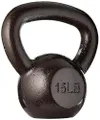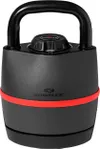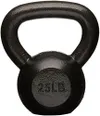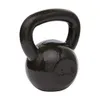
If you didn’t already know you have different types of muscle fibers in your body, now you do. And depending on how you exercise or what sports you enjoy, you’re building and recruiting some more than others.
Muscle fibers can be categorized as slow-twitch (type I) and fast-twitch (type II), and we utilize them differently depending on the movement output you focus on. To dig deeper, we spoke to qualified experts in sports science, nutrition and biomechanics to give you an insight into the main muscle fiber types, their benefits, how to train them and everything else you need to know.
Whether you enjoy endurance sports, powerlifting, sprinting, or building strength in the gym, learning the different muscle fiber types will help you. Grab one of the best protein shakers for muscle growth, and we'll take you through everything you need to know about muscle fibers.
What are the muscle fiber types?
Within your muscular system, you have skeletal muscle, controlled by the nervous system and responsible for facilitating movement. Within the muscle groups, individual muscle fibers exist, collectively called slow-twitch and fast-twitch, and these fibers are all organized into motor units.
“There are three types of muscle fibers,” explains Dave Swiss, COO at ARVRA Wellness and trained in sports science and biomechanics. “You have slow-twitch, which is type I, and fast-twitch, broken into type IIA and IIB. Type IIA is almost like a transitional type of muscle fiber… it can work with a bit of oxygen and without, so it sits between the two other types.”
Specializing in exercise physiology and biomechanics, Dave has spent over 20 years working in the health, fitness, tech and wellbeing arena. He began his career as a trainer, working on the prehab and rehab of athletes. He has held several leadership positions at large fitness brands, including Peloton Interactive.
“They also relate to energy systems,” he says. “So, if you think something is moving or can move slowly, it needs a constant feed of oxygen." Then, you’d be using your aerobic energy system.
On the other end of the spectrum are fast-twitch muscles. “These tend to be slightly bigger, and the fiber itself is slightly larger and denser,” Swiss explains. “Because of that density, they store their own energy, so they can quickly react explosively.” In this case, you’d need readily available energy and use your anaerobic energy system.
Get instant access to breaking news, the hottest reviews, great deals and helpful tips.
Swiss adds that, physiologically, we can usually distinguish between types of athletes. Endurance athletes like marathon runners tend to be slender, leaner and “more likely to have a higher ratio of slow-twitch fibers,” which are typically smaller. In comparison, a 100-metre sprinter looks more muscular with more fast-twitch muscle fibers that are typically larger.
That said, we all have our own blend of muscle fiber types from a genetic standpoint, but you can train the development of your muscle fiber types.
What are slow-twitch muscle fibers?
Type I slow-twitch muscle fibers are recruited during aerobic exercise and can sustain longer periods of movement Daniel Herman, the founder of Bio-Synergy, explains.
Slow-twitch fibers are mitochondria and myoglobin-rich, meaning they can use oxygen for energy production. “These fibers contract slowly, are resistant to fatigue and have a high capacity for aerobic metabolism, meaning they rely primarily on oxygen for energy production.”
Endurance-based activities that require sustained and low-intensity muscle contractions, like long-distance running, cycling, or swimming, typically recruit slow-twitch muscle fibers for this reason. These fibers also don’t require a huge amount of energy to produce tension and are always active, even as the intensity increases and type II fibers begin taking over.
“To train slow-twitch muscle fibers effectively, focus on endurance exercises with low to moderate intensity and longer durations," Herman advises. Like the ones above. “Or, endurance-based aerobic classes can help develop and strengthen slow-twitch fibers.” Aim for 30 minutes to several hours, using a steady pace to improve their endurance capacity.
In short, you’re looking at a steady-state effort for cardio. For resistance training, higher reps for multiple sets using lighter weights are better — we cover strength training vs hypertrophy for how to program for your training regime.
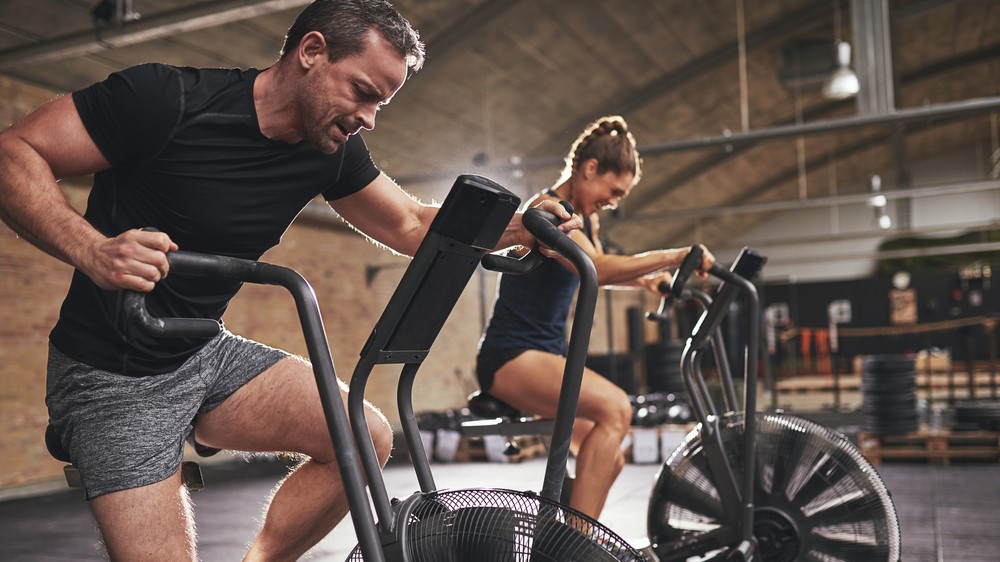
What are fast-twitch muscle fibers?
On the flip side, fast-twitch fibers contract more powerfully and quicker but also fatigue faster. Typically, these fibers recruit during anaerobic exercise. “They rely more on anaerobic metabolism, which means they can produce quick bursts of energy without oxygen,” Herman explains.
“Fast-twitch fibers are primarily used during activities that require short bursts of intense effort, such as sprinting, weightlifting, or jumping. Training both types of muscle fibers is important for overall fitness and performance.”
To train your fast-twitch muscle fibers, Herman advises incorporating high-intensity and explosive movement into your routine, such as sprinting, plyometrics, HIIT and powerlifting with heavy loads and low reps.
“Focus on short bursts of maximal effort followed by periods of rest or lower intensity to allow for recovery and optimize the training stimulus,” he advises. If you enjoy resistance training, think of heavy weights, fewer reps and “big lifts” like deadlifts and bench presses to build stronger, more powerful muscles.
“Combining endurance and strength training in your exercise regimen ensures that you’re effectively targeting and developing both slow and fast-twitch muscle fibers, leading to improved overall fitness, performance and muscle function.”

According to Swiss, untrained individuals roughly have a 50:50 mix of the two muscle fiber types. “But if you have a particular training method, you'll find the body has either more slow or fast-twitch fibers depending on what it requires. The body can adapt and support what is needed,” he says.
A study by the Physical Therapy and Rehabilitation Journal supports this, showing muscle fibers have the potential to change size and, in rare cases, convert in response to your training demands.
Although the distribution of muscle fiber types will vary depending on your training routine and biological factors like genetics, fast-twitch fibers can naturally decline with age, making daily activities requiring power harder. Training both muscle fiber types should keep the body moving functionally as you age.
What's the best way to train muscle fibers?
If you enjoy cross-training and mixed-intensity activities like team sports, these will use a combination of muscle fibers. Naturally, you’ll engage both types during these activities, but if you’re programming a workout for yourself, consider circuits using a mix of strength and endurance exercises at different intensities and adapting volume, load and exercise selection to challenge both fiber types and build strength.
We also recommend factoring in rest, nutrition and recovery for optimizing muscle fiber adaptation and growth. Herman advises including good-quality creatine and protein for overall muscle performance and recovery.
More from Tom's Guide
- Forget the gym — these 3 bodyweight moves strengthen your lower body and develop healthy hips
- I teach weightlifting for a living — this compound exercise builds full-body strength with dumbbells
- Forget sit-ups — build core strength and improve your posture with this 10-minute abs workout

Sam Hopes is a level 3 qualified trainer, a level 2 Reiki practitioner and fitness editor at Tom's Guide. She is also currently undertaking her Yoga For Athletes training course.
Sam has written for various fitness brands and websites over the years and has experience across brands at Future, such as Live Science, Fit&Well, Coach, and T3.
Having coached at fitness studios like F45 and Virgin Active and personal trained, Sam now primarily teaches outdoor bootcamps, bodyweight, calisthenics and kettlebells.
She also coaches mobility and flexibility classes several times a week and believes that true strength comes from a holistic approach to training your body.
Sam has completed two mixed doubles Hyrox competitions in London and the Netherlands and finished her first doubles attempt in 1:11.

